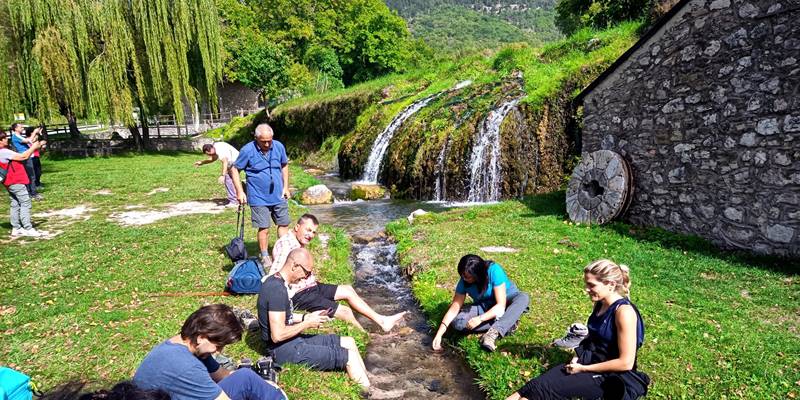
Rasing the value of "Water path" from Castelpetroso to Cercemaggiore
The pilot project aims to make usable and promote the "Water path" from Castelpetroso (IS) to Cercemaggiore (IS), through horizontal and vertical signage, with the positioning of signs and information panels along the route.
The pilot project is developed in synergy with the partnership of the Municipalities of the "Water Route" (Bojano, Campochiaro, Cercemaggiore, Cercepiccola, Guardiaregia, San Giuliano Del Sannio, San Massimo, San Polo Matese, Sepino, Cantalupo nel Sannio Castelpetroso, Santa Maria Del Molise) and sees the Municipality of Sepino as the lead entity.
It is a medium-distance route that extends over 62 km, for approximately 3-4 days of walking, passing through dirt roads and mule tracks that run alongside and cross some of the most beautiful villages in Molise. The starting point is from the Sanctuary of Addolorata in Castelpetroso, on the slopes of Mount Patalecchia rich in beech forests, where the panorama ranges from the plain to the mountains. Then it crosses Santa Maria del Molise, Cantalupo nel Sannio, San Massimo to enter the plain of Bojano, the ancient capital of the Sannio pentro, following the sheep track, a place of history and culture. After Bojano, San Polo Matese, Campochiaro and Guardiaregia it passes through the splendid WWF Oasis of Campochiaro-Guardiaregia, where we can observe three decidedly particular environments: the gorges of the Quirino torrent with the San Nicola waterfall, Mount Mutria and the karst area of Campochiaro mountain. It is not yet time to stop, the ancient Roman city of Altilia and the sanctuary of San Pietro dei Cantoni await the arrival of pilgrims, to show the most ancient soul of these Italian lands. The route develops at San Giuliano del Sannio and Cercepiccola, a place of ancient traditions which still see their maximum expression in the Carnival, then it arrives at the Sanctuary of Santa Maria della Libera in Cercemaggiore, where the wooden statue of the Virgin stands out, dating back to 1412.
